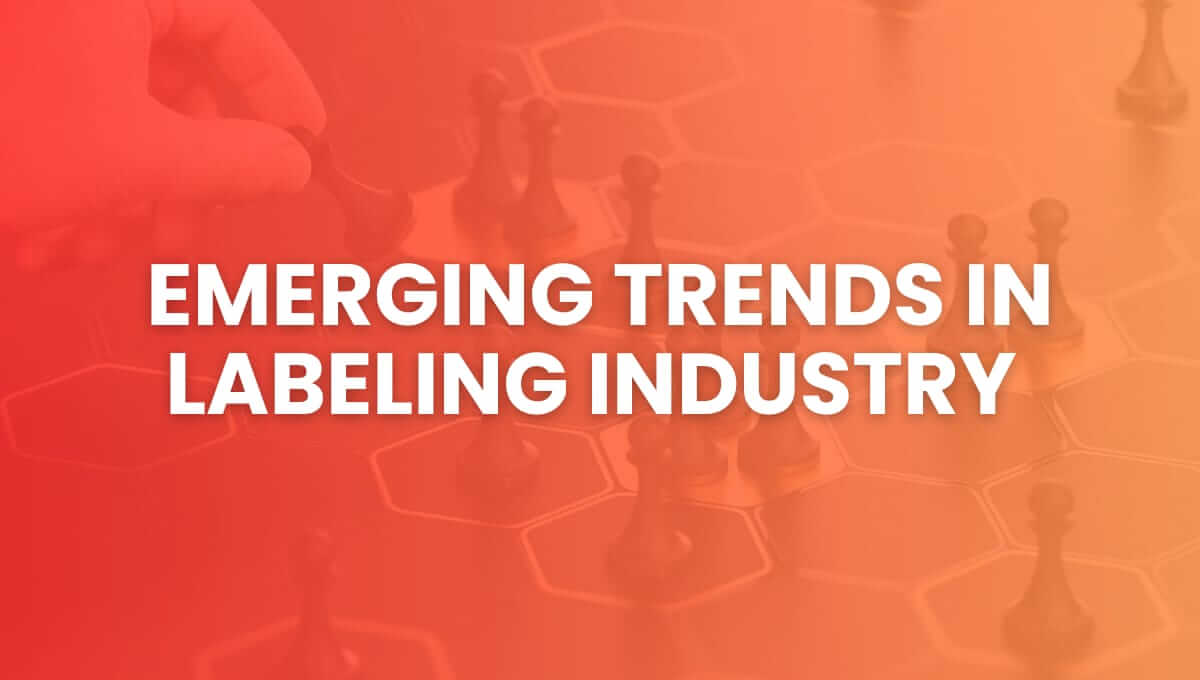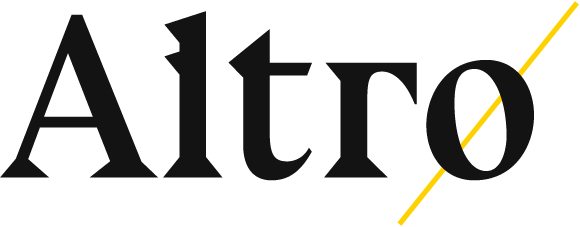Emerging Trends In Labeling Industry

The labeling industry is rapidly growing, and several technological advancements are leading to innovation. As customer demands increase, incorporating sustainable labeling approaches is important.
Every brand wants its product to stand out and gain a competitive edge. Labeling is a crucial element in product packaging. It's not limited to providing key information regarding the product to customers. Instead, it's an incredible marketing tool through which businesses can enhance their brand identity.
Incorporating the latest industry trends is a great way to maximize label potential. Keep reading to learn about the latest trends and win customers' hearts.
10 Latest Trends In Labels Industry
To stand out, you need to be up-to-date on every market trend. Carefully analyze what your target audience likes and how to meet consumer expectations.
After extensive research, we have found 10 of the latest labeling trends that you should know. By knowing these, you can build consumer trust and influence their purchasing decisions.
Show You Care About the Environment
Consumers are becoming more aware of the environmental impact of their purchases. Businesses must incorporate sustainable practices across all operations, especially labeling.
Many companies have realized this and aggressively opt for eco-friendly label materials. These include water-based and plant-based inks, which have minimal environmental impact.
In addition, the labeling industry is exploring methods to reduce waste during production. But how is this possible?
It's possible through
- Lean manufacturing techniques
- Producing labels in smaller
- More precise batches
These sustainable labels also improve the brand image. Here's what happens.
Businesses incorporate eco-friendly materials → Less impact on environment → Consumers notice it → Increase in sales.
Incorporate Innovative Smart Labels

Have you heard of smart labels?
These labels are equipped with the latest technologies, such as RFID (Radio Frequency Identification) and NFC (Near Field Communication). Through these labels, real-time tracking and inventory management have become so easy.
The RFID labels store all the data and later transmit it. So, suppose you're in an industry where constant monitoring is extremely important, like pharmaceuticals and food safety.
However, doing it manually can be difficult. What should you do then?
Utilize RFID labels. QR codes are also gaining popularity. They allow customers to access detailed product information.
Let's understand with an example.
You're selling a food product such as cereal, but you can't include all the information on the label. In this case, you can add the QR code on the label. To make it more interesting, you can experiment with Augmented Reality.
It's a unique way to engage customers with your product.
Make Customers Feel Special
Do you ever think about what makes customers choose a product? Is it aesthetics? Or a list of features mentioned on the packaging?
Nowadays, customers don't think superficially before making a purchase. Instead, they analyze whether the product resonates with their personal preferences and lifestyles. So, to stand out and push customers to choose your product, you need to personalize it.
Make customers feel special and heard.
You can add unique elements, customized messages, or visuals. Your label must engagingly convey this. Identify the customer's problem and give them a solution through your product.
If you achieve this level of personalization, you can improve customer loyalty. In e-commerce, mass customization is used for packaging and labeling. It's the key to the success of several companies.
Shift To Minimalistic Design Approach
You might have noticed that several brands are changing their packaging. Instead of complex designs, they are shifting to clean and simplistic designs. They focus on clarity and transparency instead of overwhelming customers.
This trend is widely noted in the food and beverage industry. They provide clear and transparent information to consumers, but does that make any difference?
Yes.
Brands prioritize transparency and provide concise information to easily gain the trust of health-conscious consumers. A minimalistic approach boosts customers' confidence and makes your product shine on increasingly crowded shelves.
Regulatory Compliance To Avoid Lawsuits
The rules and regulations also increase with the expansion of products in the global market. Brands must know regulations to comply with regional and international labeling standards.
Even regulatory bodies are becoming strict about information on product labels. Some common information you must add to product labels includes safety warnings, usage instructions, and nutritional content. Here are the regulations with which the product must comply
- Allergen disclosures
- Calorie counts
- Certification logos such as non-GMO, organic, or fair trade
Technological Innovations In Printing
Advancements in printing technology have drastically impacted the label industry. UV digital printing and inkjet printing can produce high-quality labels with vibrant colors.
Looking for precise cuts?
Then, the laser die-cutting method is ideal. This approach allows you to create complex labels, shapes, and designs easily. You can create eye-catching labels by using innovative materials like
- Holographic labels
- Textured finishes
- Metallic foils
Sustainability Through Digital Printing

Businesses can contribute to sustainability by implementing digital printing strategies. You can use it on labels to give them a modern look. In comparison to traditional printing methods, digital printing has several advantages. Some of them are as follows.
- Produces less waste
- No need to print plates
- Minimizes chemical waste
- Consumes fewer resources
If you're looking for short-run printing, opt for digital printing. It is highly flexible and minimizes inventory waste so companies can print precise labels. If you're running an eco-friendly brand, this will allow you to reduce your carbon footprint.
According to stats, most customers happily pay more for brand products that follow eco-friendly practices. Focus on continued advancements to show your brand's commitment to sustainability.
Make sure to comply with packaging standards. It's a great way to strengthen your emotional connection with consumers. Here's how it happens
Understand consumer preferences
Make It Unique To Surprise Customers
Are you still designing labels to attract the attention of the audience? Is leaving an impression on your customers through labels your sole goal?
If the answer is yes, you need to update your labels. These labels might have worked a few years ago, but they no longer work.
You need to transform labels into tools that enhance the consumer experience.
You can do that via scratch-off labels and peel-back labels that reveal something. It can be a specific message, discount, or promotional offer. But don't forget about the labels' functionality.
If the product is sensitive, you can use temperature-sensitive labels. This will help consumers understand if the product is stored at the optimum temperature. Here are some more that you should know.
- Edible/dissolvable Labels: Reduces packaging waste while providing essential product information.
- Fragile Labels: Warns that the product is delicate and requires careful handling.
- UV Protection Labels: Shows that the product offers protection from UV radiation.
- Perishable Labels: Highlights that the product has a limited shelf life.
Opt For Anti-Counterfeit Measures
Counterfeiting is a growing concern for brands, especially in luxury goods, pharmaceuticals, and electronics sectors. But did you know labels can be used to fight against it? But how?
Many businesses incorporate innovative anti-counterfeit approaches in their labels, safeguarding the brand and consumers. Following are some of the most commonly used methods for deterring counterfeiting.
- Tamper-evident labels
- Security inks
- Holograms
Furthermore, each product should be serialized using a unique code. This can also ensure traceability in several supply chain stages. To be two steps ahead, introduce blockchain technology into labeling. This is how you can make transparent and tamper-proof records of the product's journey.
Maximum Consumer Engagement

The future of labeling isn't limited to adding eye-catching colors or easy-to-read bold typography.
It's more than that.
Understanding customers' needs and demands is the most important thing. Labels' role goes beyond providing key information to customers. They are critical elements in marketing, entire supply chain management, and customer experience.
To Sum Up
Innovation is the most crucial aspect of the labeling industry. Businesses need to adapt to the latest technologies and keep up with trends. You also need to market products wisely through interactive labels.
This guide includes labeling key trends that can level up your business and increase sales.
But before implementing any trend, ensure it aligns with your business values. This will give you a competitive edge in the market. Check out our detailed guides now to know more about how labels can elevate your brand presence.
Want to get help from experts for your labeling needs?
Altro Labels has assisted a wide range of businesses in improving their labeling and product packaging. Contact us today to level up your brand labeling and packaging.
Frequently Asked Questions
What Is The Concept Of Label Strategy?
In marketing, the label strategy communicates the quality of products to consumers. After analyzing the packaging and its perceived value, the customer decides whether or not to purchase the product. Use artificial intelligence and understand how to gain maximum customer engagement using labels.
What Is The Growth Of The Label Market?
According to the latest statistics, the label is growing rapidly. From 2018 to 2022, the market grew rapidly, with a CAGR of 4.5%. With increased demand for food, beverages, and pharmaceuticals, the industry reached around 4.9% CAGR from 2023 to 2024.
